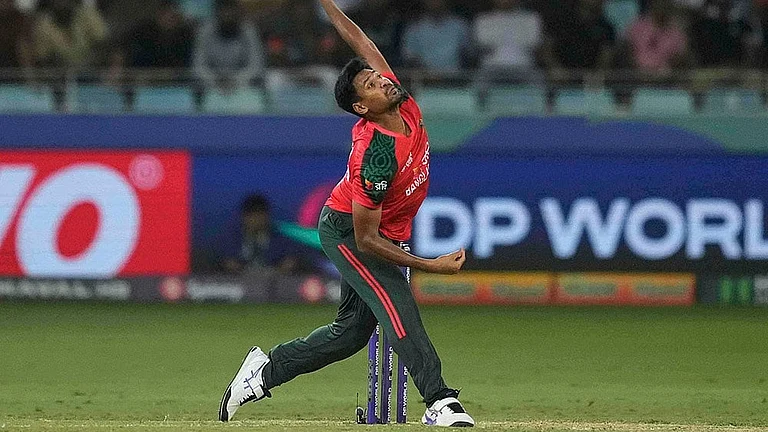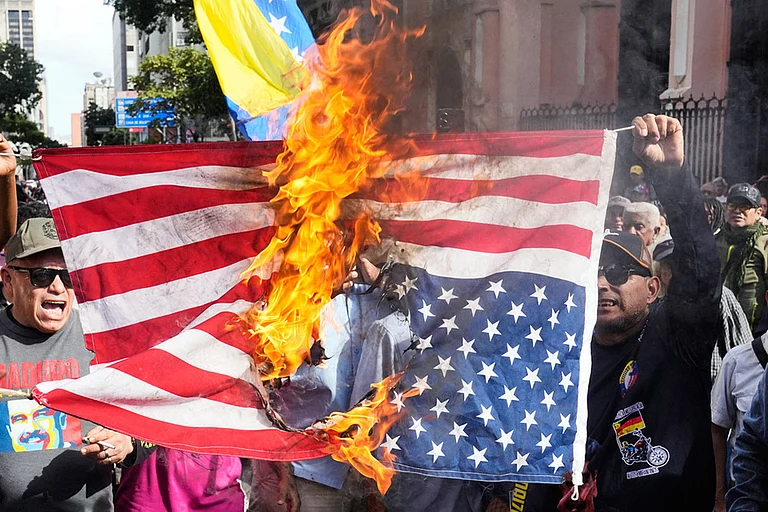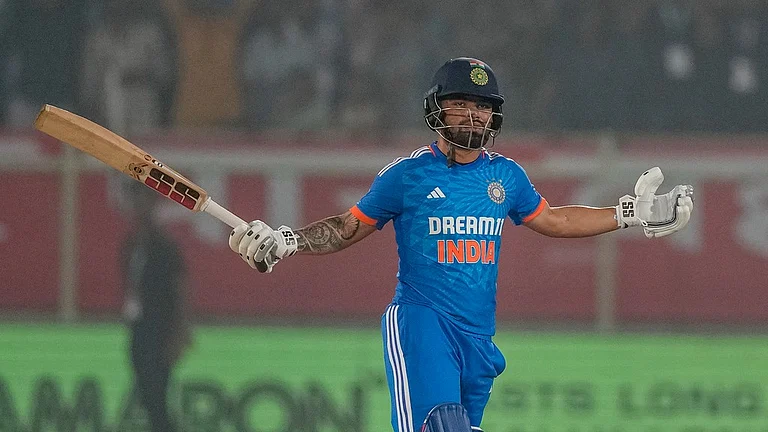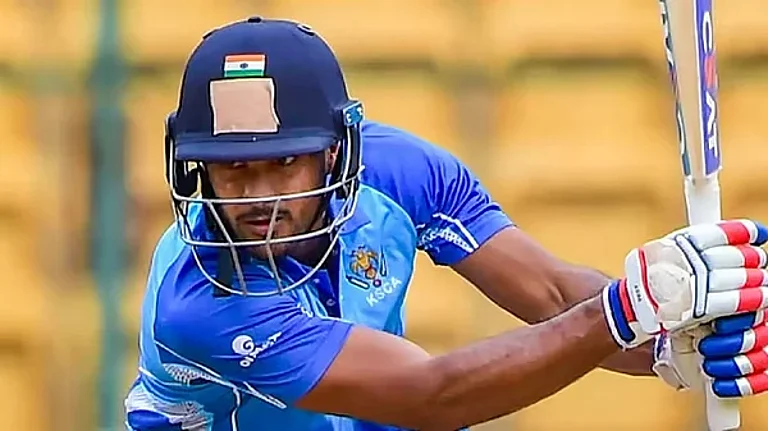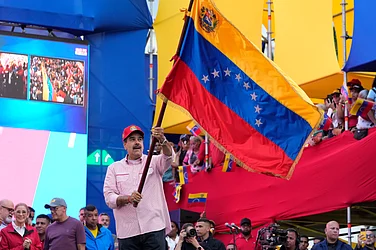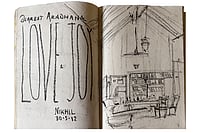For 17 years, I have kept this little memory of him. A frame of the mosque with bullet marks. He had signed his name along with the others. This was in Syracuse University in New York in 2006.
“This is to remind you of us,” he said. By “us”, he meant Palestinians. He is a radio journalist. I write in the present tense because I don’t want to think he is dead. He said his mother always kissed him off his head when he would leave in the morning for work. I think he mentioned that he lived in Gaza or Ramallah.
I am in touch with a few others who were there that evening. From Egypt and Poland. But he was lost to us.
He wrote Palestine underneath his name.
In June that year, there was yet another conflict. Operation Summer Rains was followed by Operation Autumn Clouds and there was a ceasefire between Hamas and Israel, which broke down in 2007. There have been many escalations since then, many strikes and many lives lost. The other evening, someone posted about children writing wills in Gaza. In October 2023, war broke out again between Hamas, the militant Islamist group that has controlled Gaza since 2006, and Israel. Thousands of people have died on both the sides. Among them, many are children.
Nearly half (47.3 per cent) are under 18 in Gaza. A 2021 report by the Euro-Med Human Rights Monitor found 91 per cent of Gaza’s children suffered from conflict-related trauma. A 2022 report by Save the Children found 80 per cent of children reported emotional distress.
I stumbled upon a will written by a child named Haya in Gaza on the website of ANECD (Arab Network for Early Childhood).
“Hello, I am Haya. I will write my will now. My money (80 shekels): 45 shekels for Mama, 5 for Zeina, 5 for Hashem, 5 for grandma, 5 for Aunt Heba, 5 for Aunt Mariam, 5 for Uncle Abboud, and 5 for Aunt Sara. My toys and all my stuff go to my friends Zeina, Rima, Menna, Amal and my sister. My clothes go to my cousins and if there is anything left, donate it. Donate my shoes to the poor and needy … after washing them, of course. My accessories are for my cousins, Sarah, and my aunt’s daughter, Heba.”
While Israel has ordered more than one million Palestinian civilians in northern Gaza to evacuate, Gaza is running out of water, fuel, and supplies after Israel put an aid blockade in effect. Hospitals have been struck. There is rubble everywhere in Gaza.
In other parts of the world, we are being asked to choose a side. When children begin to write their wills, something must be terribly wrong with us, the war, the arguments.
***
Al Sharati told me a few things about life in Palestine.
“You see a lot of rockets. The night flares up sometimes. There is that sound of death. The streets have these bombed-out buildings. The war is always there. In your head and outside. That’s what is normal for us. We don’t know when we will be hit but we live till we can. I decided to be a journalist because I wanted to tell our stories,” he had said.
I know I wasn’t going to find him when I went to Israel in 2009 but we always hope for the impossible. Like peace.
***
“Just as none of us is outside or beyond geography, none of us is completely free from the struggle over geography. That struggle is complex and interesting because it is not only about soldiers and cannons but also about ideas, about forms, about images and imaginings.”
—Edward Said, Culture and Imperialism
There was a bit of that. In Wadi Nisnas in Haifa. Here, instead of the memorials built all over Israel as an ode to the victims and the historical persecution of the Jews, there were stories of love and co-existence. In this small neighborhood where Jews, Christians and Muslims have lived together for years, artists had painted hope on the blackened and damaged walls. Peace seemed like a possibility here. There is always a way out. There is always an alternative. I saw a little white bird an artist had hung on a small balcony. This was a place of imaginings.
I remember graffiti on a crumbling building façade where an artist drew a safety pin in the shape of the Mediterranean Sea. The open ends of the safety pin perhaps symbolised the tryst with elusive peace. There have been talks about peace. It exists in talks, treaties. In people’s dreams, artists’ visions.
The loose ends of that safety pin need to be secured. Maybe then, peace will come. To me, it also seemed like the eye that is fated to cry forever, the tears draining out from the gap. Like hope.
I remember the wooden door in one of the alleys. There was an old framed wedding photograph of Haya Touma and Emile Touma, a Palestinian historian and a journalist and a Marxist leader, above the door. Haya’s marriage with Emile, an Arab Orthodox Christian, is an example of Jewish-Arab unity, of possibilities and of solidarities. Haya met Emile when she was 18. They married a couple of years later.
A large key hung next to the wooden door. But there was no keyhole.
A political artwork that symbolised the Arab refugee status here, it was made in 2001.
“Maybe there is a way. We have to find it,” our guide explained.
“But the door is closed. Where do you put the key?” I asked.
I remember the graffiti next to the wooden door without the keyhole. It said “somebody lived here in 1948.”
An acknowledgement. Of what was.
***
In Israel, memory is habitual, providing support to a given identity. It is forced, too. The narratives here always defined by the relationship to an Arab, the other. The construction of a national narrative here also included an attempt to eliminate the identity and memory of the Palestinians making the Israeli-Palestinian conflict also a site of intertwined narratives where reality is an interpretation, a selection of facts to correspond with collective positions, power and identities, where a traumatic past is at the core.
We insist on facts. We forget that facts too become subjective in a conflict.
“I marvel at the resilience of the Jewish people. Their best characteristic is their desire to remember. No other people have such an obsession with memory,” wrote Elie Wiesel, a Nobel laureate, and a Holocaust survivor, who has authored 57 books, including Night.
Masada in the Judean Desert is a site of memory formation. Zivit Sari, our tour guide, said she often brought her children here to listen and witness the old story about the Jewish refugees who chose death over enslavement by the Romans. There is always that preparation here. For war. There is paranoia. There is a persecution narrative and there is the heroic narrative.
“Because then they will never show their backs on the army and fight. That’s how we raise our children,” Zivit had told me then.
The story of Masada is an important part of Israel’s national narrative. Masada, one of the three fortified fortresses built by King Herod in 24 BC was the last stronghold of the Israelites that existed until it fell in the hands of the Romans in 73 AD.
Zivit said how Eleazar Ben-Yair, the commander of the Zealots, said to the Jewish refugees in Masada that they were not created by God to be slaves. He said torture and rape of women awaited them and as free people, the only option was to take their own lives. After seven months of a prolonged battle, the Romans entered Masada and saw the bodies of the 1,000 Jewish people who had chosen suicide over getting conquered.
There are many sites like Masada that have become the sites of heroic myth, an example of clannish togetherness for survival like the kibbutz, a performance space for Jewish courage and bravery, to encompass the idea of auto-emancipation and its Zionist motto: “If I am not for myself, who will be for me.”
I know that we must remember. But there is way out. For an alternative memory. Let memory be free from fear and violence. Let the children never write wills again. Let us not read of thousands of deaths and move on to other stories. Let’s not normalise war.
***
I could never make it to Palestine then. I didn’t find Al Sharati. If he is out there, I want him to know that I have kept the frame and I promise to keep it forever. As a reminder of him and his people. As a token of gratitude. I found a lot of pain in literature and in art from the region, from its people and it includes both the Israelis and the Palestinians.
In the poems of Mahmoud Darwish, the national poet of Palestine, you encounter the loss, the despair, the love. “My homeland is not a suitcase, and I am no traveller,” he wrote.
Let us remember Haya’s wooden door and make a keyhole.
Al Sharati, I hope you are well wherever you are.
[Occupied by Israel since June 1967, the West Bank - including East Jerusalem - and the Gaza Strip have come to constitute the occupied Palestinian territory (OPT).
These territories, along with Israel, form the area of the former British Mandate over Palestine, intended under the terms of United Nations General Assembly Resolution 181 of 1947 to be partitioned into two States, one Arab and another Jewish.
While the State of Israel was established on 15 May 1948 and admitted to the United Nations, a Palestinian State was not established.
—Source: United Nations Conference on Trade and Development]








